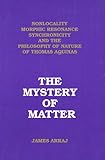Nonlocality, morphic resonance and synchronicity. What possible connection could they have with the philosophy of nature of Thomas Aquinas? It is the purpose of this book to show that these bold scientific hypotheses and a renewed Thomist philosophy of nature could enter into a dialogue that would enrich them both and give us a glimpse of the hidden unity of the universe. The obstacles standing in the way of such a dialogue are formidable. It is, for example, completely out of fashion to believe even in the existence of a philosophy of nature, still less one that would have its own distinctive way of looking at matter, space and time, and the origin of the universe and its evolution, and therefore could enter into a genuine dialogue with the sciences as an equal partner.
In Part I, we will look at David Bohm's interpretation of quantum theory, Rupert Sheldrake's formative causation, and C.G. Jung's synchronicity, all of which grew out of confrontations with strange events that defied normal scientific explanation, and point to a mysterious interconnectedness of the universe.
Part II introduces us to the philosophy of nature of Thomas Aquinas.
Part III begins the dialogue between this philosophy of nature and the work of Bohm, Sheldrake and Jung.
Part IV attempts to recover and develop a Thomist view of matter and the various dimensions of formal causality like virtual presence and intentional information.
Part V applies this view of matter and form to nonlocality, morphic resonance and synchronicity.
None of this makes particularly easy reading, but if you persevere I hope you will get a glimpse of the inner mystery of matter.


